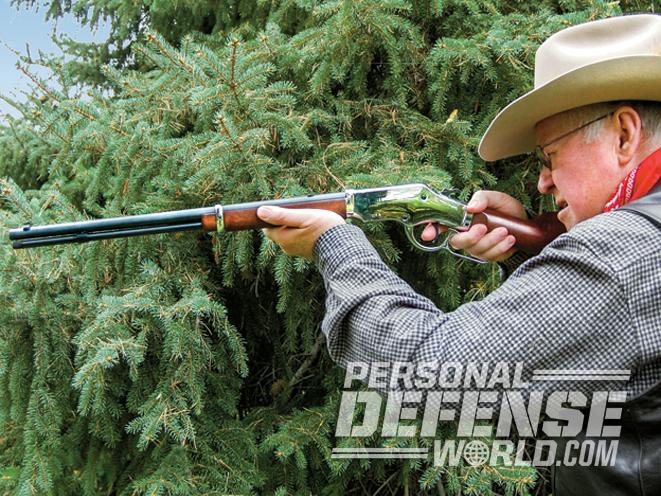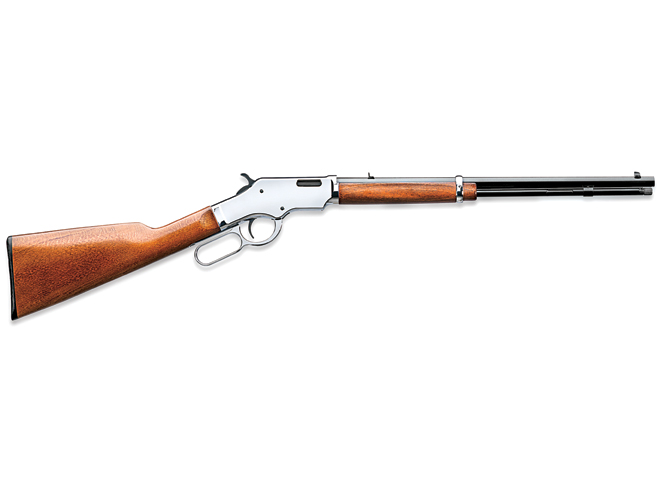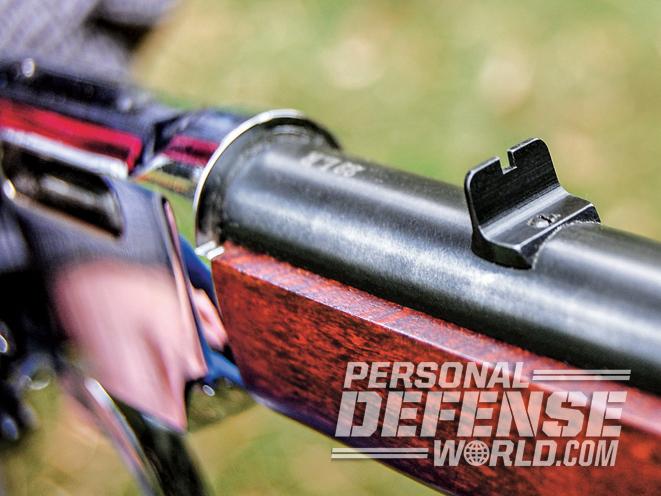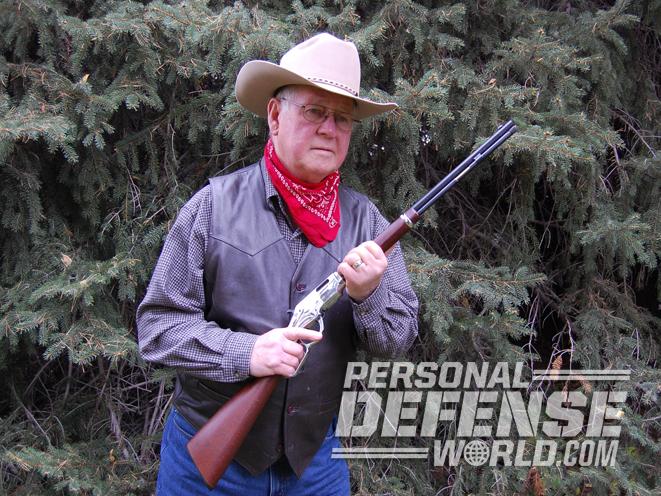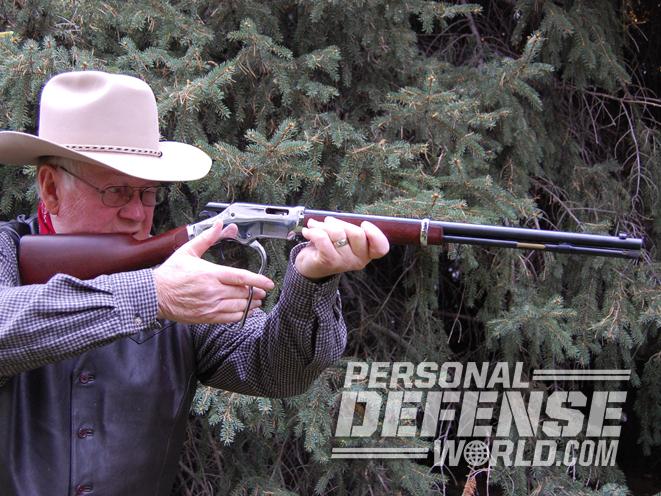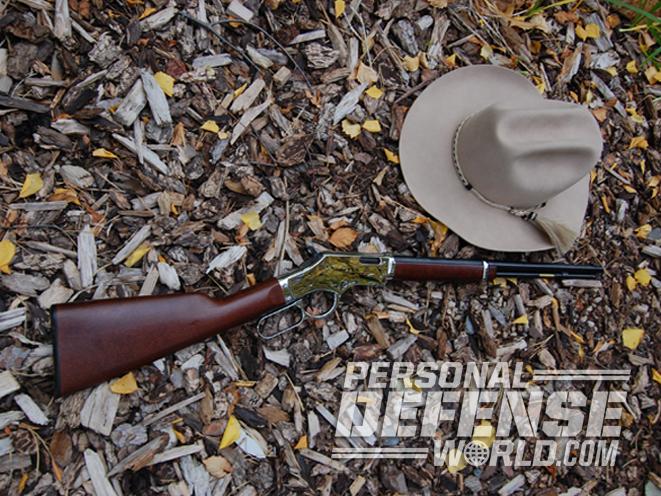Growing up in Fayetteville, North Carolina, my parents lived within the city limits, but I could see the boundary from my bedroom window. This was significant because a 400-yard walk or bike ride meant freedom for a boy who loved to hunt. You see, once I stepped into the woods outside of the city limits, it was legal for me to shoot a gun. My first safaris began on my 10th birthday, when I received a Daisy lever-action BB gun that was patterned after a Winchester Model 1894.
When I recently got my hands on Uberti’s Silverboy Lever-Action in .22 LR and took a stroll around my farm for some squirrel hunting and plinking, it was like a trip back in time. After loading the magazine full, I stepped off the cabin porch and the early-morning hunt began. In the weak light 15 minutes before sunrise, I spied a leafy limb sag under the weight of a squirrel as it changed trees about 75 yards down my 100-yard cross-valley range. I eased down a path that snaked its way into the holler and back up the other side. Standing beside the tree the bushytail had occupied a minute before, I waited.
In less time than it takes to read these first few sentences, I heard an acorn getting the meat gnawed from its hull. The detritus falling from the tree fell straight down, since no breeze was blowing. Watching the tiny bits of acorn fall, I zeroed in on the squirrel’s perch. I found the curve of his back, cocked the hammer, lined up the iron sights and held a tad lower. Pressing the trigger started a chain reaction. The bullet struck with a thunk, and four more squirrels broke cover and scrambled up and down limbs as they ran away. Stroking the lever, I tracked first one squirrel and then another until it dashed out of sight behind a limb or trunk. Within five minutes, one of the hidden tree rats eased around the tree’s trunk and clung head down, looking for whatever squirrels look for when they’re inverted. I centered the front sight blade on his spine and added him to the morning’s bag.
Advertisement — Continue Reading Below
The rest of the morning I walked hills and trails, plinking at various steel reactive targets scattered throughout the woods, as well as adding a few more bushytails to the bag. After a couple of hours, I made the transition from grown-up kid reliving in his past to writer with a job. I moseyed back to the cabin and pinned up a few targets to run this rifle through its paces.
Silverboy Specs
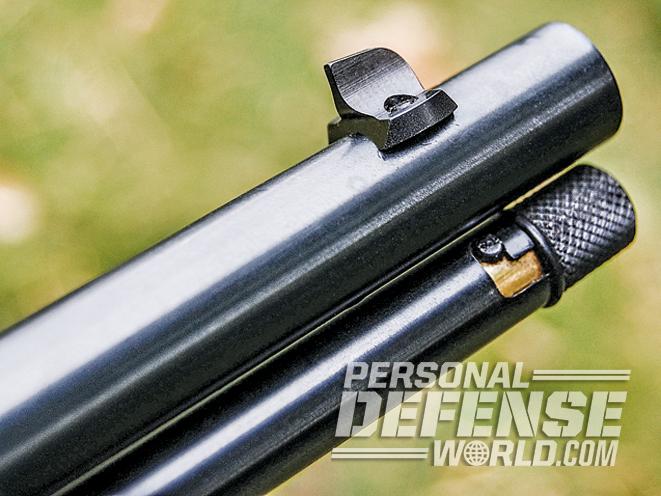
Studying the rifle in my hands, I couldn’t help but reflect on the patchwork of firearms history that led to the creation of this new rifle. Uberti’s Silverboy borrows its name from Winchester’s Model 1866 Yellowboy lever-action rifle. The 1866 Yellowboy was a marked improvement over the company’s earlier Henry rifle. It was the first true cowboy lever-action rifle, and the first rifle widely carried in a cowboy-style saddle scabbard. The Yellowboy had a convenient new type of loading gate, devised by Winchester plant superintendent Nelson King. The gate passed cartridges through the side of the receiver. This improvement made the lever action more functional and allowed for the installation of a wooden forend. In some regards, the new Silverboy’s loading process harkens back to the earlier Henry. They both load from the magazine tube toward the muzzle end. Whereas a Henry shooter had to depress the follower spring to facilitate loading, the Silverboy wears a spring-loaded tube that is extracted toward the muzzle like many other tube-fed .22 rimfire repeaters.
Advertisement — Continue Reading Below
When first introduced, the handy carbine version of the 1866 Yellowboy was a hit worldwide. Chief Sitting Bull had one, the forces of Benito Juarez used the rifles in Mexico and the Turkish Army used the new Winchester Yellowboy against the Russians.
Uberti recreated three of the most popular Yellowboy models, so it made perfect sense to build a scaled-down version with some appropriate modifications to a rimfire model. The loading assembly incorporates a cartridge-control mechanism that allows controlled round feeding so that the gun can be fired reliably while held at any angle.
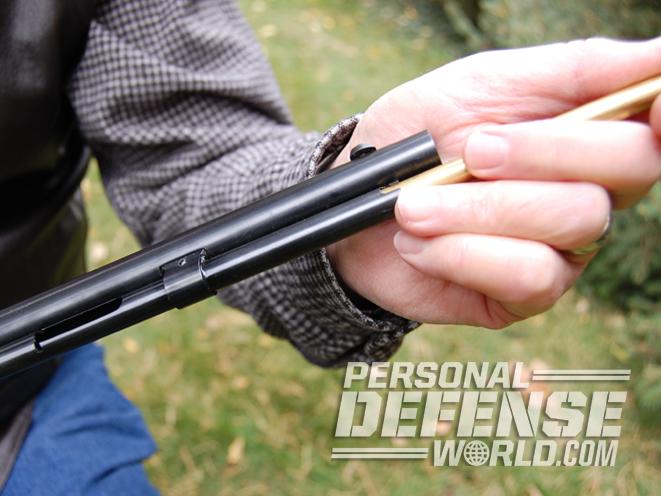
The Silverboy wears a 19-inch, round barrel with six-groove rifling in a right-hand twist. The rifle is a compact 37 inches overall, and it tips the scales a 5.8 pounds. The frame of the Silverboy is made from an alloy, and the barrel is blued steel.
Advertisement — Continue Reading Below
RELATED: Gun Review – Uberti 1873 Cattleman .22 LR
My first exposure to the Italian manufacturer A. Uberti, Srl. was while I ran Stoeger Publishing, formerly a division of Stoeger Industries and a Beretta Holdings company. A renowned builder of replica American firearms, Uberti is a mix of old and new. Many of the same employees who have built these replica arms for decades still work for the company. The company was purchased by Beretta Holdings a decade ago and moved manufacturing into a new facility in Gardone Val Trompia, near Brescia, Italy. While I toured the company, I marveled at the new and old technology. Machinery that dated back to the company’s origin a half-century past sat next to state-of-the-art robotics. Giacomo Merlino, managing director of Uberti, oversees the exacting recreation of the numerous historic firearms manufactured. Working through an interpreter, Merlino gave me a wonderful tour of his new facility ten years ago.
Today, Uberti still produces the high-quality replicas of American percussion revolvers, cartridge revolvers, single-shots and lever-action rifles that made it famous. Not only are the Uberti guns exacting replicas down to the finest detail, but with modern machinery and materials, they’re actually better than the originals.
Advertisement — Continue Reading Below
Plinking Time
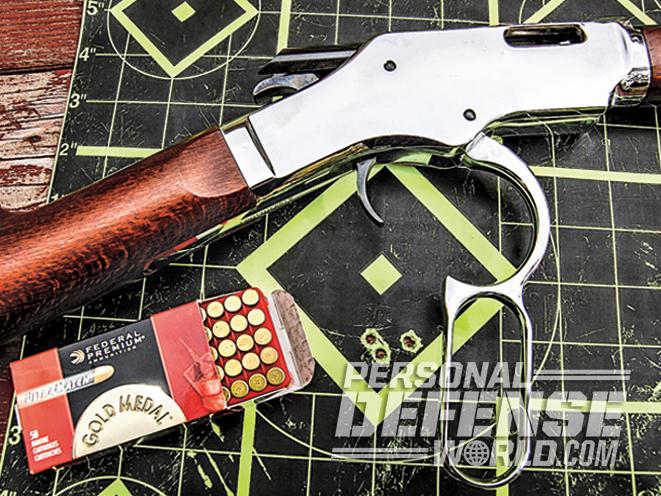
Twenty-five yards is a respectable distance to evaluate an iron-sighted .22 rimfire rifle, especially if you have eyesight like mine. A far cry from when I shot in NRA Small Bore competitions in college, the challenge of bifocals and iron sights makes a 50-yard target more difficult to shoot precision groups.
Advertisement — Continue Reading Below
Bifocals are a handicap, so I gave the Silverboy’s iron sights a fair shake by shooting groups at 25 yards to evaluate its accuracy. I chose four loads that ranged from precision target loads to economy-grade loads, but I gave it a boost by employing a trick I learned while shooting rimfire competition in college: I sorted all of the ammo by rim thickness. Since the .22 rimfire round headspaces on the rim, it makes sense to raise your accuracy by sorting ammunition that headspaces the same from shot to shot. Measuring rim thickness with Hornady’s Lock-N-Load Rimfire Thickness Gauge showed that rim thickness commonly varies up to 0.0025 inches. When I sorted the ammunition with the Hornady gauge, I categorized each round according to its largest measurement around the rim’s circumference. Since the thickest part of the rim will contact the chamber mouth first, that’s the reasoning behind my preference in the ammo sorting process.
The first load I tested was the rather inexpensive 40-grain Winchester Dynapoint .22 LR. This load averaged 2.96 inches, while the smallest group measured 2.52 inches. The next two economy loads were not sorted with the same care as the previous load. No surprise, Federal’s 40-grain Lightning ammunition averaged 2.86 inches, while the tightest group measured 2.4 inches. Remington’s standard-velocity 40-grain Target load averaged 2.14 inches, and the tightest measured 1.68 inches. The last load I tested was Winchester’s new 40-grain M-22 load. The tightest group measured 1.24 inches, and the average was 1.62 inches.
Lasting Legacy
Advertisement — Continue Reading Below
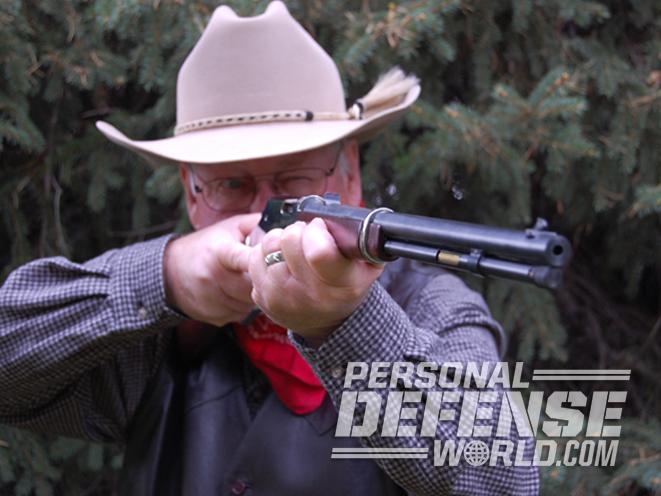
Aldo Uberti founded the original company in the foothills of the Italian Alps in 1959 to recreate the famous firearms of the past. He first made the Colt-designed blackpowder revolvers and later moved on to Remington and Winchester designs. It was during this era that Colt ceased production of its famous Single Action Army or “Peacemaker” revolvers. In 1960, Italian movie director Sergio Leone consulted with Aldo Uberti to find the Old West guns he needed for what would become known as “spaghetti Westerns,” which were made famous by actors like Clint Eastwood. These movies would also promote worldwide interest in the guns of the American West.
RELATED: Top 4 Classic Old West Replica Guns Offered In 2015
Advertisement — Continue Reading Below
Today, Uberti targets collectors, cowboy action shooters and Civil War skirmishers. Uberti also produce frames, cylinders and barrels for several other companies like parent company Beretta, Cimarron Firearms, Taurus, Charles Daly and Navy Arms. The U.S. marketing and sales division is located in Beretta USA factory in Accokeek, Maryland. Actually, Uberti’s U.S. division is managed and directed as a division of Benelli USA, which is also owned by Beretta Holdings.
No one dreams of the Old West without conjuring up images of six-shooters, lever action rifles and the celebrated buffalo guns that could shoot a mile. These days, original guns are worth thousands of dollars, and most are housed in museums and private gun collections. The thought of shooting one of these treasured collector’s items would set a museum curator’s nerves on edge. In fact, the thrill of shooting a gun from the Old West might have been lost if it had not been for gun-maker Aldo Uberti. Add a Silverboy to your arsenal to provide some economical plinking with a historical feel.
For more information, visit http://www.uberti.com or call 800-264-4962.
Advertisement — Continue Reading Below
